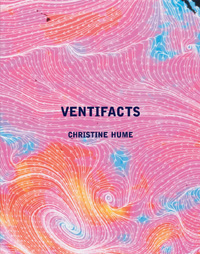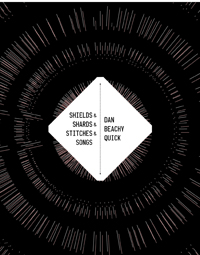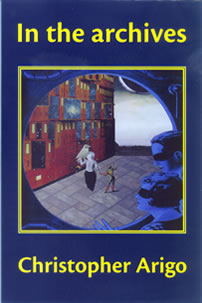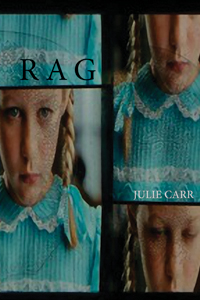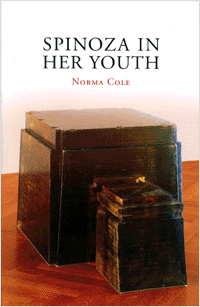Description
Ventifacts begins the year Christine Hume’s daughter develops a wind phobia, but quickly blows into lyric investigations of the wind in art, politics, and literature, highlighting the currents between imaginary relations and physical conditions.
About the Author
Reviews
Excerpt
Christine Hume is the author of three books, most recently Shot (Counterpath, 2010) and a chapbook and CD, Lullaby:Speculations on the First Active Sense (Ugly Duckling Presse, 2008). Lux Books in Berlin, Germany released a bilingual selected poems in 2012. She directs the interdisciplinary Creative Writing Program at Eastern Michigan University in Ypsilanti, where she lives with her partner, Jeff Clark, and their daughter, Juna.
Hume skillfully interweaves her wind artifacts that are at times informative, factual, philosophical, literary, speculative, poetic, and always open to wonder. “The iconography of wind translates spaces into powerful fictions and futures,” the author writes. So does Ventifacts.
The main force in this book is the language. The wind blows through each sentence in this book. It isn’t so much what Hume says, but how she says it. The wind is an ancient study, she writes: “It used to be the realm of the ancient gods, but now our weather reports reflect regional ontologies” (22). But Hume has found a way to make it new. She makes the wind omnipresent, both physically and intellectually: “Take the shape of music: chimes, bells, Aeolian harp, the natural minor key. All the rushes whisper at once when the wind blows through. Wind is the first music, a soundscape for the ecosystem” (31). She also brings the wind close to the reader. By finding a way, with words, to describe so clearly and precisely the movement, sound, and impact of the wind she makes it beautiful to the reader as well: “Up close, its helmet of harsh vowels whispers too close to decipher; from the other side of the field, its rustle beckons, sometimes lifts into a zeroing whistle” (17). Through sensual imagery and exacting language, Hume has found a way to make the ancient new and thrilling.
What impresses me most about this chapbook is its ability to shift and swirl, its breadth and breath. Hume has managed to use the solid, bottled form of prose and contain within it the dynamism of wind. The deceptive prose wrapping of Hume’s chapbook hides within it the whorl of poetic and scientific reflection. It is shaped in paragraphs, yes, but within those paragraphs lie poetry, memoir, essay. It reminds me of the commercial by General Electric, where a little boy captures wind in a bottle and uses it to blow out the candles on his grandfather’s cake.
Ventifacts moves much the way that wind does—invisibly, winding around and across the borders of various subjects, making itself known through the physical evidence left behind: questions, memories, theories, stories, sounds, figures and facts. The name alludes to the book’s form, short pieces of prose that are remnants of thought. Hume sketches out a broad understanding of wind’s movement across culture and time, in climatology, government, health issues, themes in literature, mythology, philosophy, etymology, art. This is a book whose thinking lends itself to thinking about it in long lists. I try to accumulate my feelings. I try to articulate the invisible movement behind the evidence.
You see very quickly into Ventifacts that there is a mirroring going on between mother and daughter. Hume never becomes afraid of the wind, but learns to become uneasy with the knowledge that her daughter, upon exposure, will soon get into a mood. Weather patterns can shift dramatically with no warning, and we learn that so too can the days and plans of Hume and her family. Some of the book’s most intimate moments come from Hume meditating on this mirroring, or simply on the relationship of mother to daughter. Hume will spend entire sections charting the progress of her daughter’s phobia. She will interject her own thinking about the history of wind studies or research into wind in literature with sharp questions, questions that each seem to be a permutation of How can I expose my child to what she fears and still be a good mother? In one of the essay’s most searing sections, she writes, “Is it sadistic not to shelter my daughter? Not to validate the experience of her own feelings? Am I squelching the power of her interior life by rejecting its vivid manifestations? Am I enabling her to develop the wisdom of not believing everything she thinks?” (30).
Wind is a tiny prospect, an active mimetic force working expressly inside things. Wind never disappears, it goes into remission. When there is no wind, there is breeze; there is draft, nascent stirrings, and ominous stillness. Because we live on a rotating planet with fire and ice, the very air brings the threat of wind. It carries anguished assassins. Anyone who is attuned to air knows to look for its tracings and ransoms.
We look out the window at blue sky cut with a vapor trail, the specter of a plane on the way to Detroit. Up there is filled with my daughter’s gleaned idea of heaven, teeming with transitive ghosts and eternal spirits. With their swift operations and transmitting talents, winds have often been taken for angels. An uplifting power is their second nature. The child breathes that evanescence into the world. It reminds her of how powerful she is, how epic, how exhausted.

